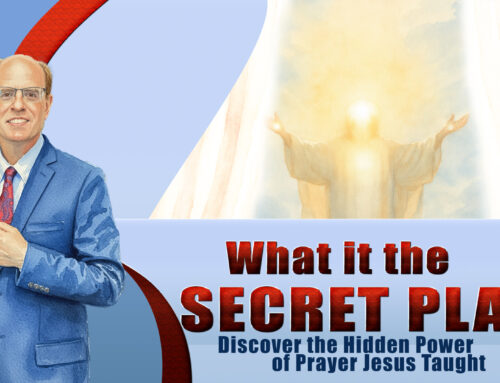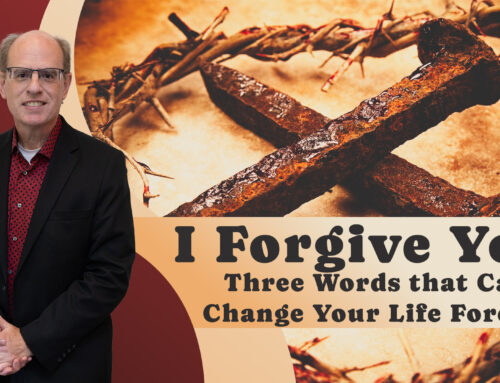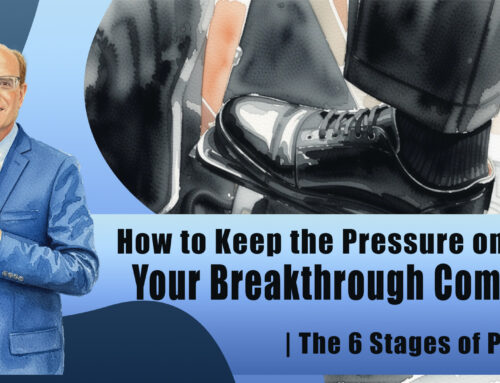The Home Church
Let’s see some Bible verses on house churches.
“To Philemon our brother and fellow worker, and to Apphia our sister, and to Archippus our fellow soldier, and to the church in your house.”
Philemon 1: 1, 2
“And every day in the temple and from house to house, they kept right on teaching and preaching Jesus as the Christ.”
Acts 5: 42
“How I did shrink from declaring to you anything that was profitable, and teaching you publicly and from house to house.”
Acts 20: 20
“Day by day continuing with one mind in the Temple, and breaking bread from house to house, they were taking their meals together with gladness and sincerity of house.”
Acts 2: 46
“The churches of Asia greet you. Aquila and Priscila greet you heartily in the Lord, with the Church that is in their house.”
1 Corinthians 16: 19
“For where two or three have gathered together in My Name, I am there in their midst.”
Matthew 18: 20
“Greet the brethren who are in Laodicea and also Nympha and the church is in her house.”
Colossians 4: 15
So, here we see the early Church met in houses. They would have larger gatherings as well as house-to-house. These house churches can work if done right. They can get people involved, produce accountability, develop leaders, and effectively disciple believers. In mega churches, people can get lost in the crowd, and many fail to develop and function in their giftings and callings.
Remember what Paul said-
“From whom the whole body, being fitted and held together by what every joint supplies, according to the proper working of each individual part, causes the growth of the body for the building up of itself in love.”
Ephesians 4: 16
The Living God calls us, and He desires that each one of us fulfill the high call of Heaven. The Greek word for Church is “ekklesia,” also called out ones. The writer of the Book of Hebrews explained-
“Therefore Jesus also, that He might sanctify the people through His own blood, suffered outside the gate. So, let us go out to Him outside the camp, bearing His reproach. For here we are seeking the city which is to come.”
Hebrews 13: 12-14
And
“I will dwell in them and walk among them; and I will be their God, and they shall be My people. Therefore, come out from their midst and be separate,’ say the Lord. And do not touch what is unclean and I will welcome you.”
2 Corinthians 6: 16b-17
As believers, we are to come together and not forsake the gathering together of the Church. The Book of Hebrews says-
“And let us consider how to stimulate one another to love and good deeds, not forsaking our own assembling together, as is the habit of some, but encouraging one another and all the more as you see the day drawing near.”
Hebrews 10: 24-25
The Early Church and House Churches
Let’s look at the early Church, which turned the world upside down despite severe persecution and often the loss of all things.
“And every day, in the Temple ad from house to house, they kept right on teaching and preaching Jesus as the Christ.”
Acts 5: 42
Here the Church had gatherings where large numbers gathered, but they also met in houses. In reality, America and most Western nations need missionaries and a fresh move of evangelism. And one of the most effective ways of evangelism is planting new churches; at the heart of that, we see house churches. Larry Kreider wrote-
The greatest catalyst for spiritual growth in Christ is turning our eyes from ourselves and setting our sight on Jesus and the needs of those around us. A group of people who are always looking inward and who are content with the status quo will never grow and multiply.
Many years ago, when I was working on my Master’s degree, I had to do a class on leadership. One thing they taught that I would never forget was that change occurs best in small groups. For example, the government used this strategy during WW2 to get people to eat Spam. So, you can see the power and importance of small groups in big churches or house churches.
Something Robert Gladstone said-
God cradles the seasons, our seasons, in His hands. We all know people can do unwise things and get off track, or they can even lead others to get off track. Our stewardship of God’s resources has not been perfect — but His stewardship has been perfect.
How many of us have made mistakes? How many of us have been injured in the House of God? When we are hurt, we put up walls to protect ourselves and guard our hearts and all too often pull back and desire to have nothing to do with the local Church.
Yet, Church was the design of the Holy Spirit and not man, and Paul explained the importance of the local Church. Local Church becomes where we connect with and minister to the Body of Christ. As humans, we were created to know and enjoy relationships and fellowship with others, and this is just as true for the Body as for an individual.
Paul explained-
“So that Christ may dwell in your hearts through faith; and that you being rooted and grounded in love, may be able to comprehend with all the saints what is the breadth and length and height and depth, and to know the love of Christ which surpasses knowledge, that you may be filled up to all the fullness of God.”
Ephesians 3: 17-19
Here we see that His love is so great that no one person can know it, and we need each other. God purposely made the Body such that no one member has it all, and we need each other. Listen to this-
“From whom the whole body, being fitted and held together by what every joint supplies, according to the proper working of each individual part, causes the growth of the body for the building up of itself in love.”
Ephesians 4: 16
We love to boast in some big ministry and see churches built around a person. Yet, true growth comes when every part is enabled to supply according to its proper function. There are many people busy in the Church, but only a few are actively doing the call.
The Early Church and Our Gathering Together
As we continue to look at what the is “Church,” we need to understand how the early Church saw ‘church.”
“Now we request you, brethren, with regard to the coming of our Lord Jesus Christ and our gathering together to Him.”
2 Thessalonians 2: 1
This term “gathering together” is what we need to focus on. In the early Church, there was a strong alignment with Israel and Jewish thought. James Carleton Paget and Judith Lieu, in their work on the Second Century Church, stated-
Second-century Jews and Christians represented themselves collectively as an assembly (synagogé, ekklesia) and a people (laos, ethnos, Israel).1
This is not surprising as Jews started the Church, and Jesus was Jewish. Unfortunately, over the years, we have lost sight of the Jewish roots of the Bible, and it has impacted our understanding to a degree regarding what was being said in the Word. Paget and Lieu further stated-
Christians as well as Jews continued to claim the Pentateuchal descriptions laos, ethnos and Israel.2
- The Hebrew word ”Laos” means “the people of the Lord”
- “ethnos” means a nation or a group of people living under one rule
- Israel refers to the Name of the people of promise
Let’s add some more understanding of the Second Century Church.
The word ekklesia could be used for the whole congregation of Israel as well as the church. 3
The Early Church
The early Church was not defined by what it did but by what it believed. Just like today, people believed in numerous gods, but Christianity and Judaism believed in One God. Kruger explained it this way-
Not so for Christians. Like their Jewish forebears, Christians were monotheists. There was only one true God, and that God was jealous in his desire for exclusive worship. Moreover, one entered into a right relationship with that God not so much by the performance of cultic duties, but by belief. And if it is by belief, then Christians were eager to make sure they believed the right things.4
The Second Century saw a rise in heresies, and as a result, the Church saw the need to defend against these, and we saw the Church begin to organize. They began to define leadership and declared that the foundation of their beliefs was based on what the apostles taught.5
In addition-
In addition, the rule of faith was also viewed as something that expressed the fundamental message of the Old Testament and how that message pointed to the redemptive work of Christ. In sum, the rule of faith was viewed as ‘a summary of Scripture’s own story line’.6
The church played a key role in teaching these doctrines and fighting heresies.
The Church was seen as local, regional, and global. And while it comprised many local churches forming the regional Church, they were all part of the global Church. In addition, Paget and Lieu, the call of the Children of Israel to do “Aliyah” or to gather back as one people in one place, Israel, is also the call to the Church. In these Last Days, we have seen Jews worldwide making Aliyah; as a result, millions of Jews have returned to the restored nation of Israel. In these Last Days, the Church will soon, as Paul explained, have our divine “Aliyah.”
“That in the dispensation of the fulness of times he might gather together in one all things, in Christ, both which are in Heaven, and which are on earth; even in Him.”
Ephesians 1: 10 KJV
In the Second Century, the Church, just like today, was scattered throughout the known world, but they knew they had a promise. What promise? A promise that one day, He would gather us just as He has begun to gather the natural seed of Israel. One day, He will come to His Church and gather us all together (both those on the earth and those in Heaven) into one place at one time into our Promised Land with Him.
The word used for “things” in the above verse is the Greek word “pas, ” meaning individuals, everyone, all, the whole. There is a day soon when by promise, He must come for His Church and gather us all together as one in one place.
Let’s look at local churches and the role of house churches. It is clear from the writings of Paul that the Church met in house churches. These local house churches may have joined together as all the churches in the entire city or region.7 We see also in Paul’s letter, for example, “to the Church of God at Corinth,” which could refer to all the local churches found at Corinth.
The weakness of numerous house churches is the ability to allow error in and for divisions. This may, in part, have been the reason for the Church establishing Monepiscopacies in the Second Century, thereby linking the churches and bringing them under one regional leader.
The house church would have formed around a particular family, including extended family members, slaves, etc., with the addition of new converts and other believers nearby. Some of these house churches began to look for shops to hold services much like today.8
Some of the house churches held by richer families had bigger places for people. However, poorer families also had house churches. Historical documents suggest they lived in multi-story tenements with businesses typically on the ground floor. 9 This brings to mind the incident where Paul preached in Acts chapter twenty, and the young boy fell from the third window.
There are also non-Christian sources stating that Christians meet in houses or storefronts. Kruger stated-
The Christian propensity to meet in individual homes fits with Celsus’ most foundational critique of Christians, namely that they worship privately and in secret. Christians, he complains, are ‘people who wall themselves off and break away from the rest of mankind’.10
He also adds
Similar references to house churches can be found in other second-century literature. The Shepherd of Hermas refers to bishops/elders ‘who are hospitable, who always gladly welcomed the slaves of God into their homes without hypocrisy’.11
During the later part of the Second Century, houses used for house churches began to be modified to be better designed for church services.
It is important to note that Christians didn’t just meet in house churches, for example, we know they met at the Temple. Looking closely at the Day of Pentecost, the Scriptures indicate they were not necessarily still in the “upper room” but may have been at the Temple when the Holy Spirit was poured out. More on that another day. In addition, the Church met in halls or courtyards. Jesus clearly held services outside, and we see several services held outside by the disciples.




